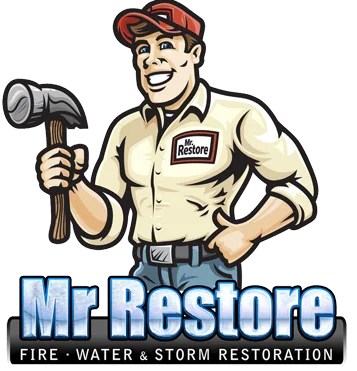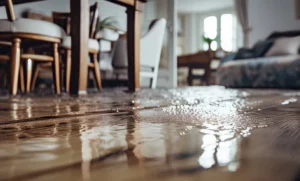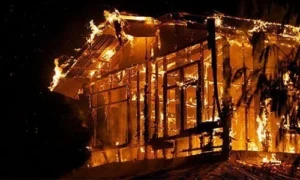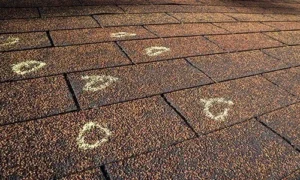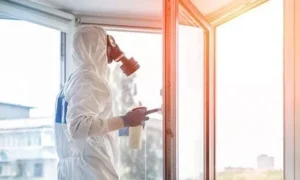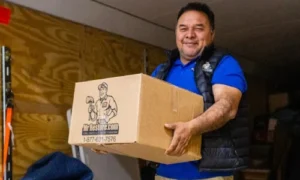Wood floors are a prized focal point of any household. They are a beautiful element to your home and often will run throughout the entire house. However, when exposed to water, wood floors will immediately become damaged and may need to be replaced entirely. Because wood floors are made from organic material, they can only withhold the effects of water for a short period of time. Natural wood absorbs water rather quickly and, if not treated immediately, will lead to lasting damage. If you are lucky enough to have real wood floors in your home, it is vital that you recognize the signs of water damage and know how to treat it. Before we dive into what water damage to wood floors looks like, it is important to note that if you notice any of the following signs of water damage to your floors, you should immediately contact Mr. Restore. It is crucial that a trained eye assess the damage to wood floors in order to prevent the spread of mold/mildew and prevent further damage. The longer water sits on hardwood floors, the more likely it will cause irreplaceable damage. Even if you think the damage is not catastrophic, it is best to contact a professional restoration company just to be sure.
How To Spot Water Damage to Wood Floors
Water damage to wood floors can happen from a variety of sources, including a spill that was not properly cleaned up, a leaky roof or pipe, or a broken dishwasher or washing machine. No matter the source, wood floors that are suffering from water damage will have one or more of the following characteristics:
- Staining or Discoloration – Wood floors that suffer from water damage will appear to have dark stains where it was exposed to moisture. Stains can be tricky to treat because it can be difficult to tell if the stain is on the surface of the floor or if the moisture has penetrated through the material. Be sure to have a professional assess the damage before attempting to treat it yourself.
- Mold and Mildew – Mold and mildew can also appear to look like a stain on your wood floors. If the mold/mildew appears to be on top of it, you can easily remove it by wiping the surface. This is usually the case if the wood was not exposed to moisture for very long. If you wipe the surface and still notice a mold stain, you will need to contact a professional to remove the mold and replace your floors.
- Cupping – Hardwood floors “cup” when there is more moisture on the bottom of the wood than on the surface. This usually occurs when a spill is left unattended, or there is a lot of moisture in the air. You will notice your wood floors cupping by a dip in the middle of the wood panel with the edges raised. If moisture is completely removed from the wood board by a restoration professional, it should return to normal after it is dried out. However, it will need to be stained and refinished even after it has dried.
- Buckling – Buckling will only happen if the wood has been exposed to extreme water damage, such as exposure to water for long periods of time or extensive flooding. Buckling is when the wood will pull away from the subfloors.
Remember, if you notice any of these signs of water damage to your hardwood floors, do not attempt to treat them yourself. Mr. Restore’s technicians have extensive experience identifying and restoring water damage to wood floors. We will assess the damage and walk you through the entire process to ensure your beautiful floors are back to normal and the damage does not lead to mold growth. Contact us today!
